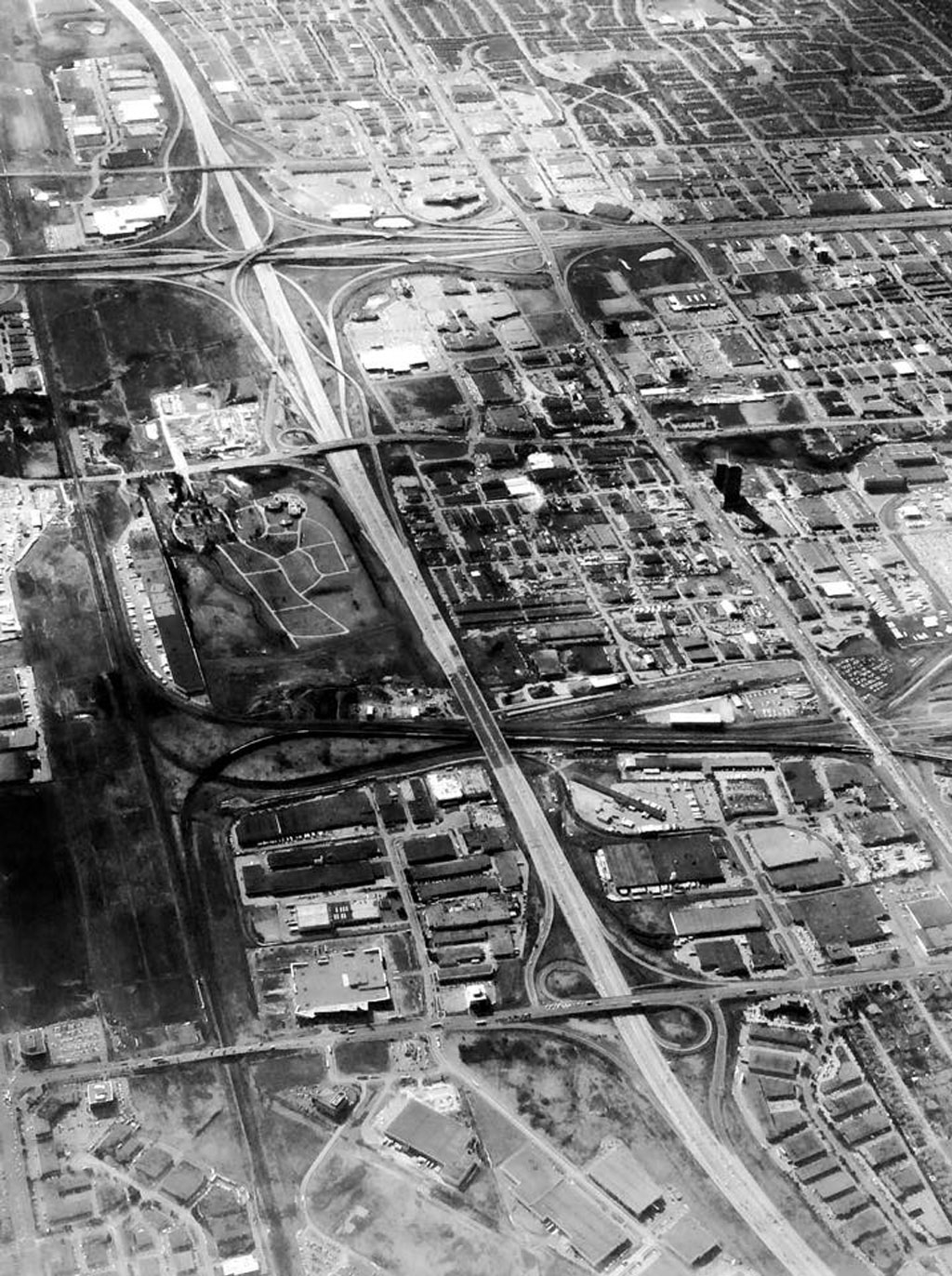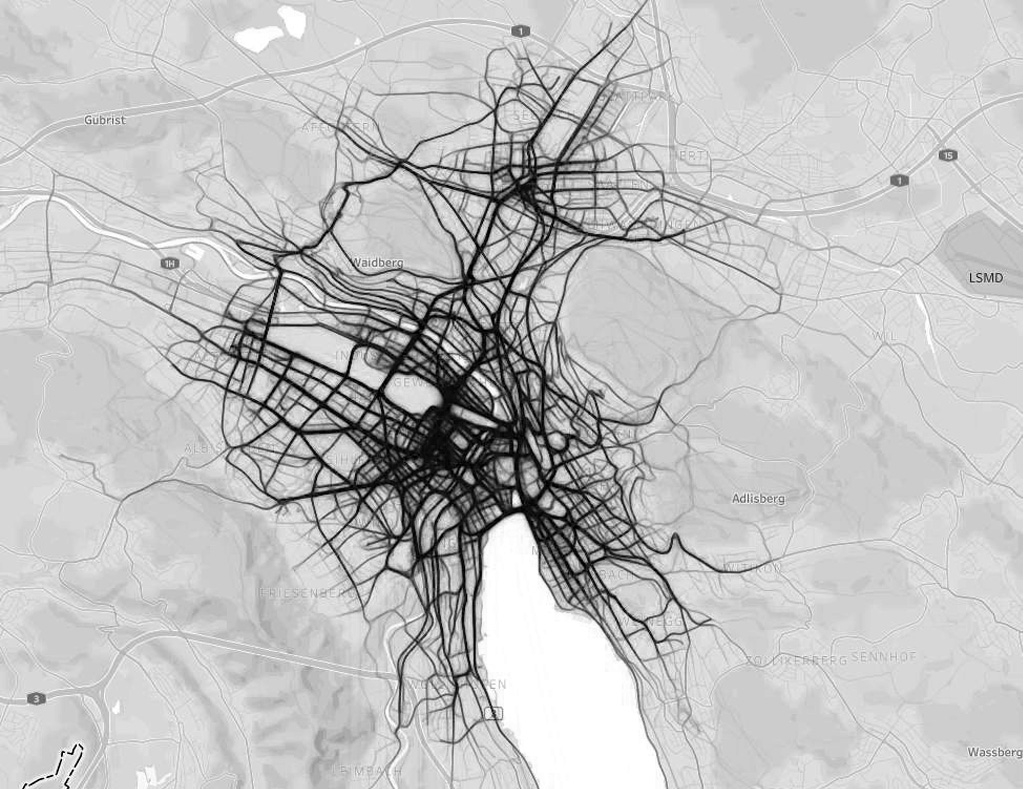ANALYSIS
THE CITY AND THE CAR
Mimi Sheller & John Urry © Joint Editors and Blackwell Publishers Ltd. 2000
The article is analyzing rather than questioning; it aims to discuss the specific character of the car and requires that social analysts take seriously their relation to the car. While doing this, it specifically points out the lack of content in the globalization literature, although the car is such a constituent of global cultures. To support this insight, the article refers to contemporary global cities that remain primarily rooted in and defined by the car as well as social life.
Within the article, the problem is defined by three disciplines that ought to have examined the social impact of the car since the significant consequences of the car have generally been ignored by the social sciences. Among those three disciplines—industrial sociology, consumption practices, and urban studies—the article focuses on the urban section as its particular concern due to the absence of cars in the analysis of urban studies. At this point, from the perspective of the founders of sociology, the modern city, together with the modernist ideology, takes center stage of the debate within the context of the contraction of social space, the density of transactions, and the compression of social distance that indeed comprised the modern city. Here, for the authors, it is critical to understand that urban life has failed to consider the overwhelming impact of the car in transforming the modern urban/suburban dweller in time-space scopes. Then, we meet another dramatic opening of the article as well as a critic; urban studies have, in fact, been remarkably static and concerned themselves little with the forms of mobility into, across, and through the city. This chapter is particularly significant to understand the main problem for the authors since they criticize urban studies that have best concentrated upon the sociospatial practices of walking the city and presume that the movement and environmental hazards of the car are largely irrelevant to deciphering the nature of the city.
In order to strengthen the critique, the article goes on the concept of automobility to detect that the urban studies have omitted to consider how the car reconfigures urban life while traveling and socializing in an automobilized time-space. Then, we meet the intersection between mobility and urbanity as constitutives of modernity, which provokes automobility and should be examined within civil societies.
Although the main epistemological position of the article is constructed on subjectivity (subjectivist epistemology), we can still feel the echoes of the other two epistemological positions; somehow constructivist and objectivist epistemological positions are there to support the defense. In the article, as a general point of view, subjectivity implies that what is perceived about the car is what is real (that indeed we need to face), and the reality of the car, especially within the urban context and social studies, is the real truth that does not exist independently of perception. At the same time, the article gives us an insight into how different people, eras, and cultures may construct (rather than ignore) the meaning of the car in different ways, even in relation to the same phenomenon within modern sociology and urban context that puts the article on the constructionist epistemological stance. Beside, in the article, objectivist epistemology holds a meaningful reality about the car that exists independently of consciousness and experience since man-machine interaction creates its own spatial organization organically in an industrialized (in the article mostly mentioned as automobilized) society, which is impossible to resist the mechanization. This mechanical as well as emotional connection between man and machine seems to force its own consciousness, which naturally affects mankind where we meet objectivity.
As clearly stated in the links between disciplines, the article analyzes, synthesizes, and harmonizes the car as a coordinated phenomenon, as well as a social manifestation, to create a coherent whole about urban morphological transformation over mobility; at this point, the main disciplinary research position could relate to interdisciplinarity. The article synthesizes more than two disciplines, rather focusing on urban studies, and aims to establish a new level of discourse and integration of knowledge, mainly about the social impact of cars. This interdisciplinary effort will create new disciplines, such as car and transportation or intelligent mobility design, in the future. The article stresses these “inter” disciplines and brings about the reciprocal interaction between them in order to generate new common methodologies, perspectives, knowledge, and even new disciplines, while bringing into prominence a blurring of disciplinary boundaries. Yet, the article could relate to transdisciplinarity as a parallel disciplinary research tradition; since both of the authors are looking at the cross section between industrial sociology, consumption practices, and urban studies to go on the farther side of the car, trans" means here across, beyond, and over for summarizing the engaged process to assemble disciplines and recombine information. Here, transdisciplinarity provides holistic schemes of the car that inevitably subordinate various disciplines while looking at the dynamics of whole living systems from a modern perspective.
The main theoretical debate of the article is based on automobility to capture its senses and the complex amalgam between civil society and the city. During the debates, automobility is considered a social practice and way of dwelling, maybe not in a stationary home but in a mobile, semi-privatized capsule. The authors argue that automobility has reshaped citizenship and the public sphere through the mobilization of modern civil societies; in particular, they point out that civil society should be reconceptualized as a ‘civil society of automobility’, a civil society of quasi-objects, or ‘car-drivers’ and ‘car-passengers’, along with ‘pedestrians’ and others not-in-cars who suffer a kind of ‘lack’. The most dramatic part of this concept appears in a chapter where ‘auto’ is used in double resonance, where we face the sharpest curve of the content where human and machine meet in suggestive semantic content. As written in the article, on the one hand, ‘auto’ refers reflexively to the humanist self, such as the meaning of ‘auto’ in notions like autobiography or autoerotic; on the other hand, ‘auto’ often occurs in conjunction with objects or machines that possess a capacity for movement, as expressed by terms such as automatic, automaton, and especially automobile. After this intense statement, the article connects itself to a much more sophisticated way in which the car-driver is considered a ‘hybrid’ assemblage, not simply of autonomous humans but simultaneously of machines, roads, buildings, signs, and entire cultures of mobility (Haraway, 1991; Thrift, 1996: 282-4). With such manifestation, the authors argue that this will transform current understandings and analyses of contemporary cities, which they both indeed aim to reveal.
The other theoretical debate of the article subjects all the complexes of time and space in the city to explore how automobility makes instantaneous time and the negotiation of extensive space central to how social life is configured. Dwelling in mobility takes another central point in theoretical debates. As people dwell in and socially interact through their cars, they become hyphenated car drivers. In a spatial movement via transcending distance to complete a series of activities within fragmented moments of time, the car transforms these activities in a distinct combination of flexibility and coercion. The conclusive theoretical debate begins with redesigning the city of automobility in the future to trace a vision of an evolved automobility for the cities of tomorrow, in which public space might again be made public.
As a method of inquiry, constructivism takes the central part in the article, with a set of ontological and epistemological assumptions described over automobility. The article seeks to elucidate in-depth insights and interpretations of cars as a social phenomenon from the perspective of mobility, which indeed encompasses the diversity, density, and stimulus of urban social life that have long been associated with the individuals who experience the city-space where urban architecture has become a function of movement.
At its core terminology, the mobilization of modern civil societies assumes that the article depends on written, experiential, observable, and interpretable facts as well as people in action or artifacts such as objects, buildings, or urban implements, which makes the methodological approach of the dissertation qualitative. The subjective reality of automobility and the views of the authors as interactives with the subject of cars support this assumption. As a qualitative research article, the article contains and explores information about the central phenomenon of concern, which is automobility as a mode of location, of dwelling, of architecture, and of association, in which movement constitutes cities as civil spheres. Furthermore, the article provides a definition of the central phenomenon that is not typically understood by a broad audience; here we found ourselves at the concept of urbanization, which leads us to understand the intensification of human habitats, the concentration of places in space, and the unification of condensed temporal flows. Then the authors narrow the central phenomenon down to the automobilization that, contrary to urbanization, leads us to the extension of human habitats, the dispersal of places across space, the opportunities to escape certain locales and to form new socialities, and the fragmentation of temporal flows, especially through suburbanization. Clearly, the epistemological background and theoretical framework of the article are compatible with the methodological approach.
The article is quite radical with its content and the way it approaches the central phenomenon that basically is the car; it has shown how automobility, mostly over the car, fosters a civil society of hybridized 'car-drivers', accelerates a collapse of movement between the public and the private, generates a new theme and style of political contestation, and points toward a complex interweaving of mobility and communication within the urban infrastructure. According to the authors, car-drivers dwelling within their cars produce the temporal and spatial geographies of cities as a function of motorized mobility. Within this context, the main critical point regarding urban studies ends with the conclusion that the civil society of automobility that arises within contemporary cities involves the transformation of public space into flows of traffic, coercing, constraining, and unfolding a dominance that analysts of the urban area have barely begun to see.
The industrial revolution has had a critical impact on society, particularly with cars. How we design and build is different due to industrial changes; parallel to this, a key manifestation of the industrial revolution has always been the car. Looking at how various design concepts and objectives have been used in parallel between architecture, urban studies, and car design is helpful since each can learn a great deal from the other.
Throughout the history of transportation, there have been moments that redefined the conception of the modern city. For decades, there has been a sharp distinction between architects, urban planners, and car designers; as the article strongly recommends, this should disappear and merge those disciplines for a better society.

